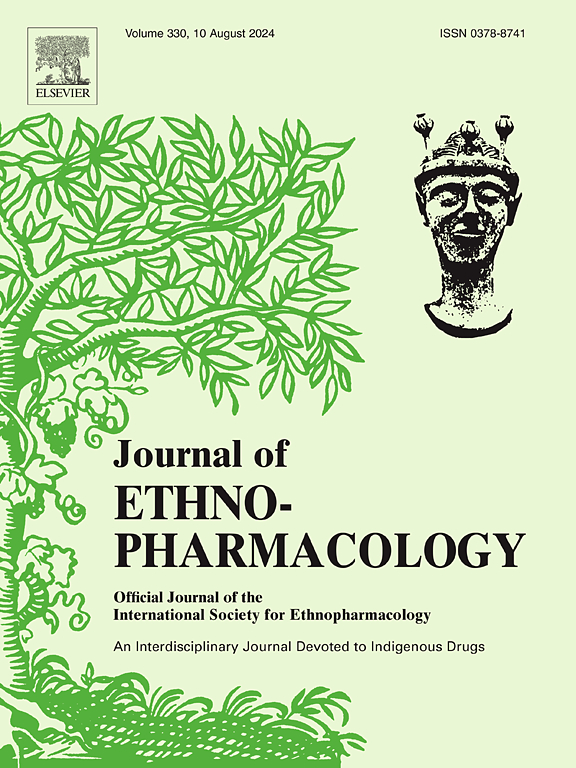Mechanism of Marsdenia tenacissima in treating breast cancer by targeting the MAPK signaling pathway: Utilising metabolomics, network pharmacology, and In vivo experiments for verification
IF 4.8
2区 医学
Q1 CHEMISTRY, MEDICINAL
引用次数: 0
Abstract
Ethnopharmacological relevance
Marsdenia tenacissima dried stems have been used to treat asthma, trachitis, rheumatism, and carbuncles. M. Tenacissima extract is now available in China under the brand name "Xiao Ai Ping" and is commonly used in conjunction with chemotherapy to treat a number of diseases, including liver cancer, gastric cancer, colon cancer, and non-small cell lung cancer.
Purpose of the study
The research focused on the potential mechanisms contributing to the in vivo therapeutic effects on breast cancer using the ethyl acetate portion of M. tenacissima extract (EMTE), demonstrating significant promise in treating lung cancer in our initial experiments.
Materials and methods
We examined the impact of EMTE on the growth of breast cancer through experiments on homoplastic breast cancer mice. Moreover, we utilized UPLC-Q-TOF/MS analysis to identify the components of EMTE and anticipate its potential therapeutic targets. Through network pharmacology, we predicted the potential targets and pathways affected by EMTE in relation to breast cancer. Additionally, we analysed the metabolic changes induced by EMTE during its anti-breast cancer effects.
Results
The MAPK pathway was identified as the most likely route by which EMTE could influence breast cancer through network pharmacological enrichment of pathways. Research on animals showed that EMTE could successfully inhibit the development of breast tumours in the homoplastic breast cancer mouse model. We observed that EMTE treatment affected the metabolism of breast cancer mice, particularly in the biosynthesis of phenylalanine, tyrosine, tryptophan, linoleic acid metabolism, and pyrimidine metabolism. These metabolic alterations may have contributed to the effects of glycolysis, tumour immune evasion, and pyrimidine de novo synthesis.
Conclusion
Based on the results of network pharmacological and metabolomic analysis, we postulate that the inhibition of the MAPK/ERK pathway may have played a role in promoting apoptosis in breast cancer cells and confirmed relevant protein expression of the MAPK/ERK signaling pathway with Western blotting in tumour tissue of homoplastic breast cancer mice.

求助全文
约1分钟内获得全文
求助全文
来源期刊

Journal of ethnopharmacology
医学-全科医学与补充医学
CiteScore
10.30
自引率
5.60%
发文量
967
审稿时长
77 days
期刊介绍:
The Journal of Ethnopharmacology is dedicated to the exchange of information and understandings about people''s use of plants, fungi, animals, microorganisms and minerals and their biological and pharmacological effects based on the principles established through international conventions. Early people confronted with illness and disease, discovered a wealth of useful therapeutic agents in the plant and animal kingdoms. The empirical knowledge of these medicinal substances and their toxic potential was passed on by oral tradition and sometimes recorded in herbals and other texts on materia medica. Many valuable drugs of today (e.g., atropine, ephedrine, tubocurarine, digoxin, reserpine) came into use through the study of indigenous remedies. Chemists continue to use plant-derived drugs (e.g., morphine, taxol, physostigmine, quinidine, emetine) as prototypes in their attempts to develop more effective and less toxic medicinals.
 求助内容:
求助内容: 应助结果提醒方式:
应助结果提醒方式:


